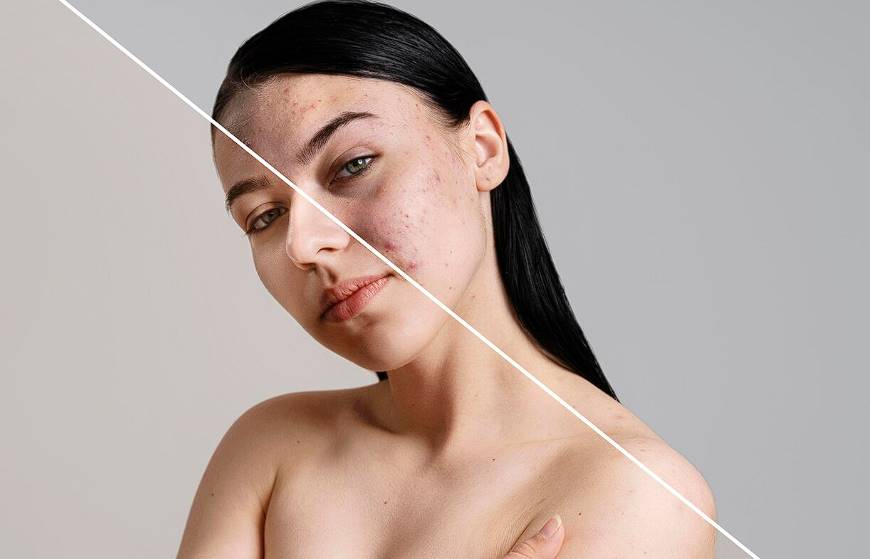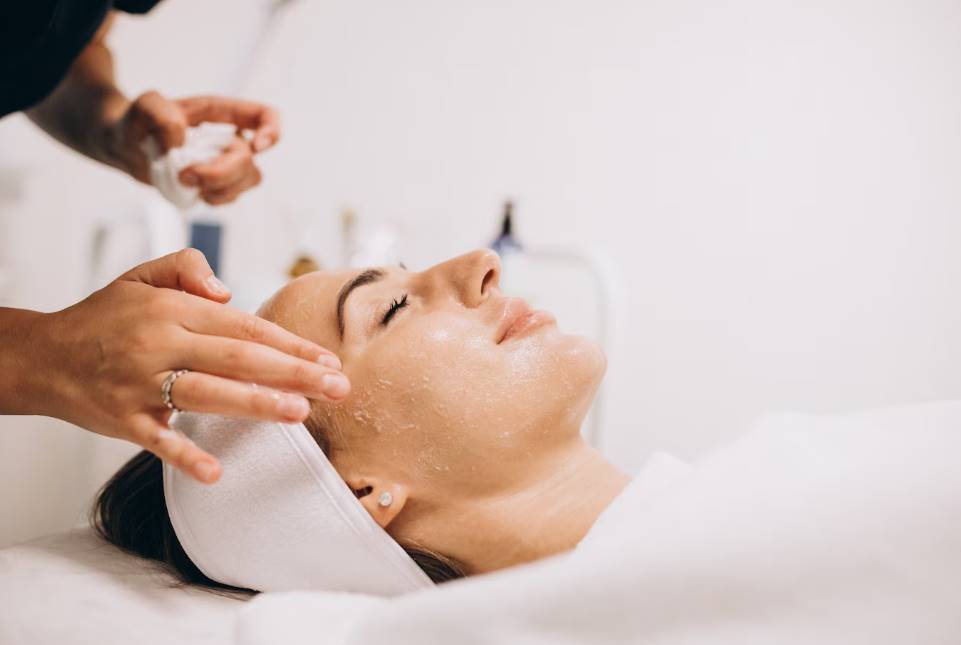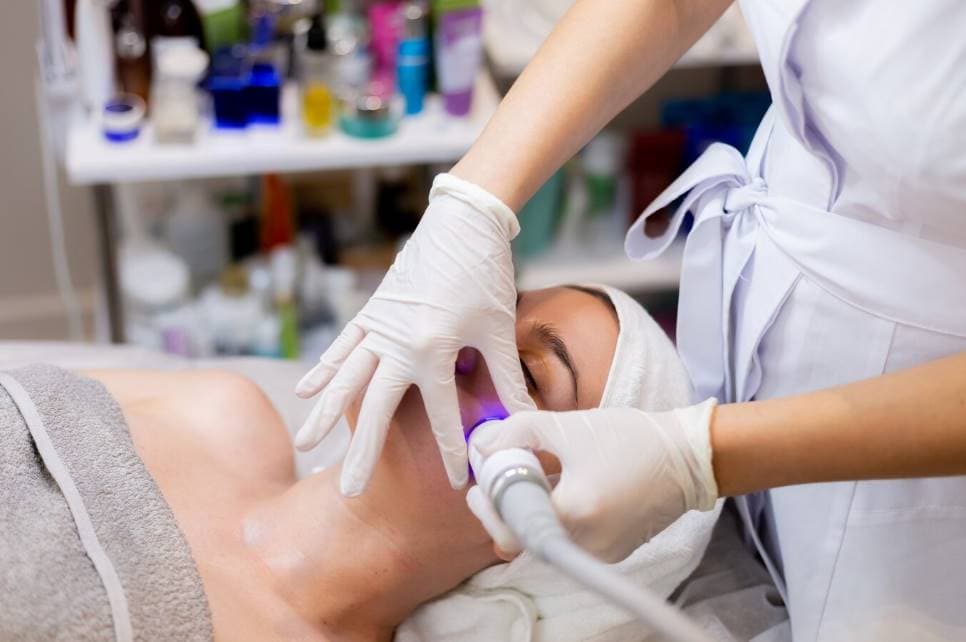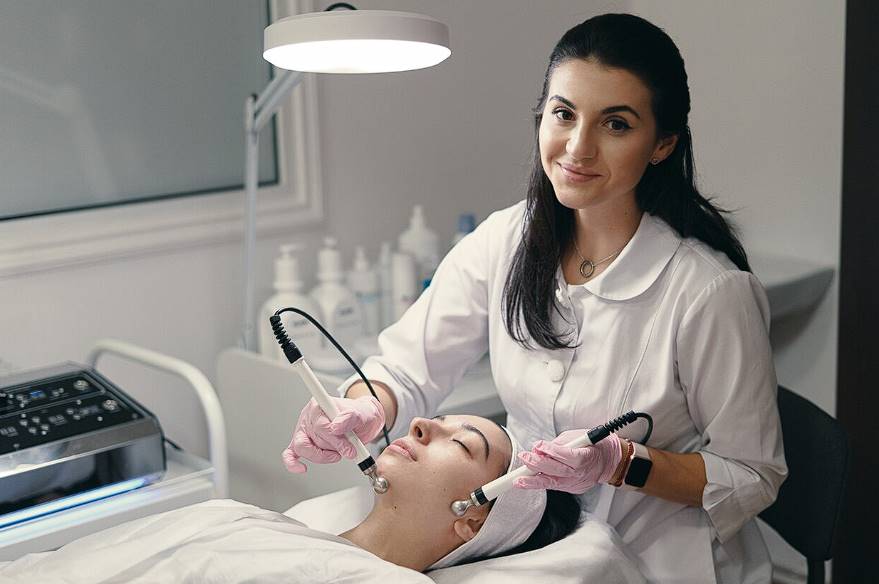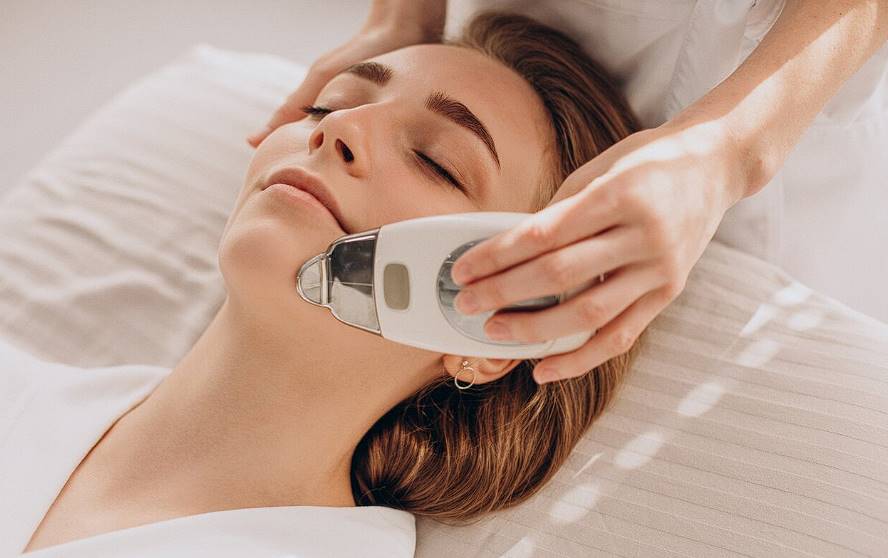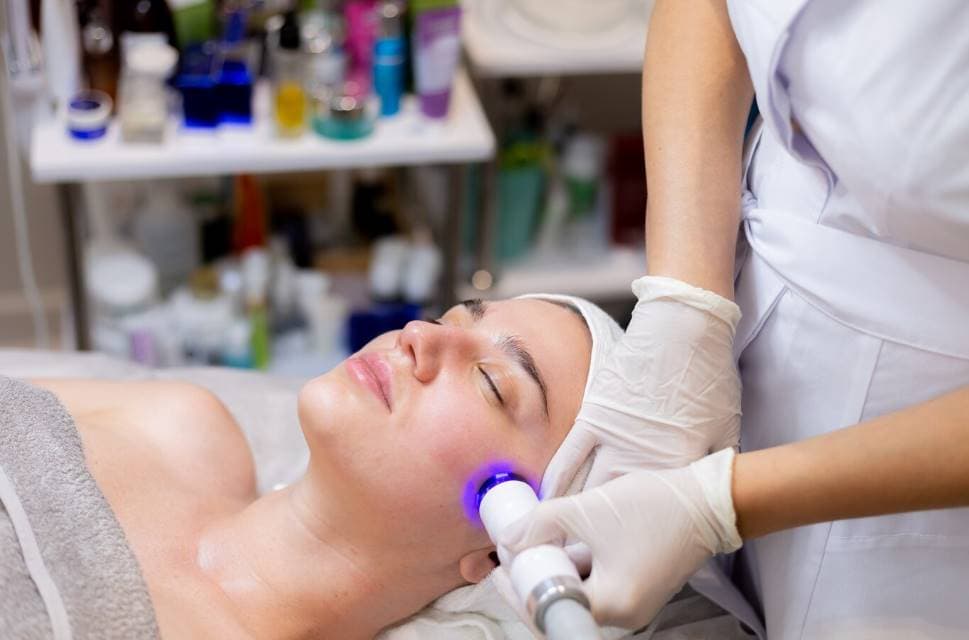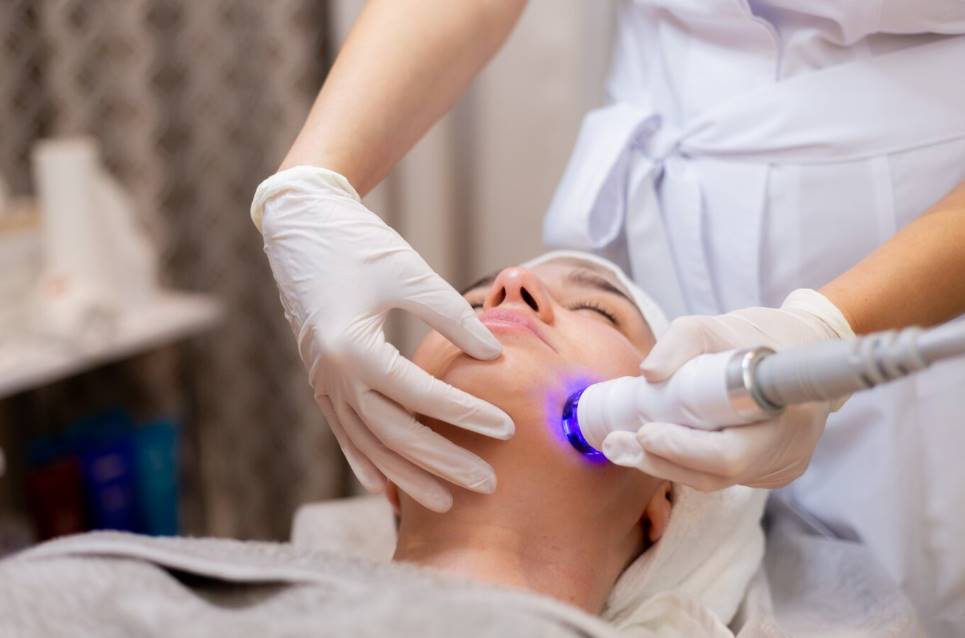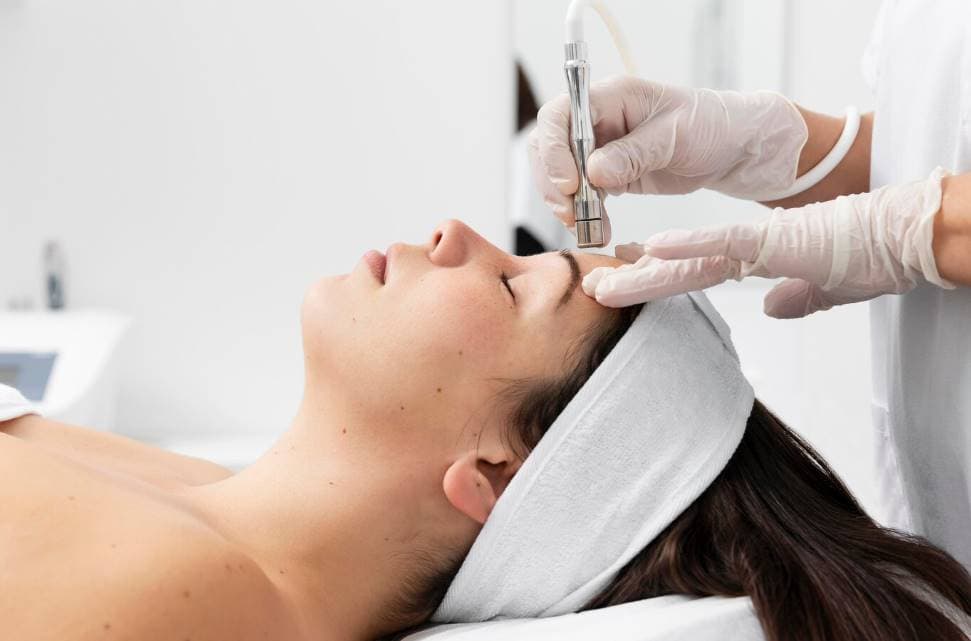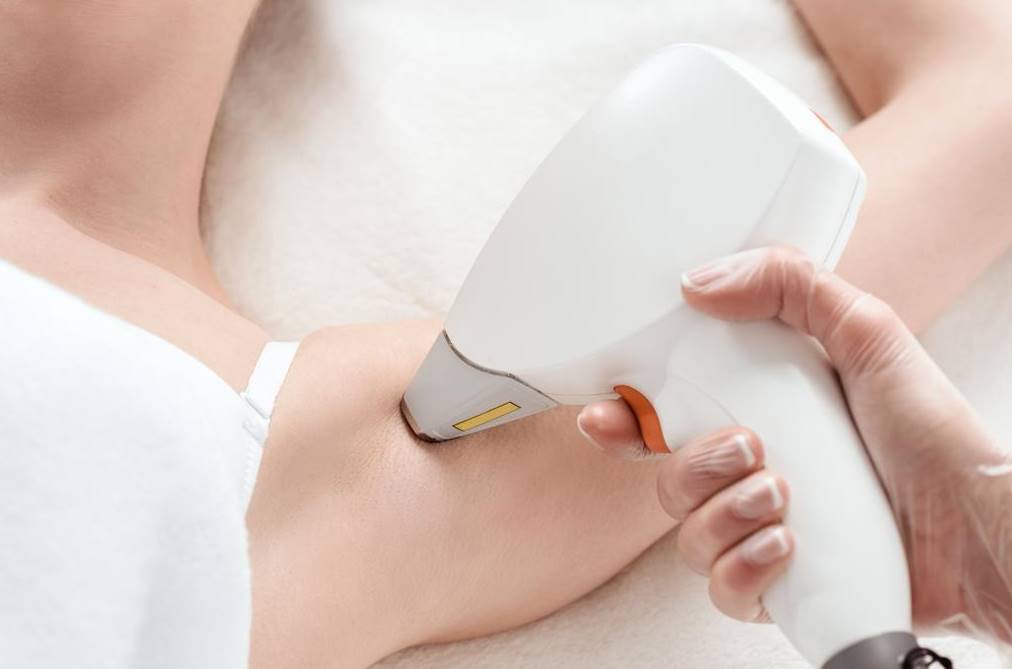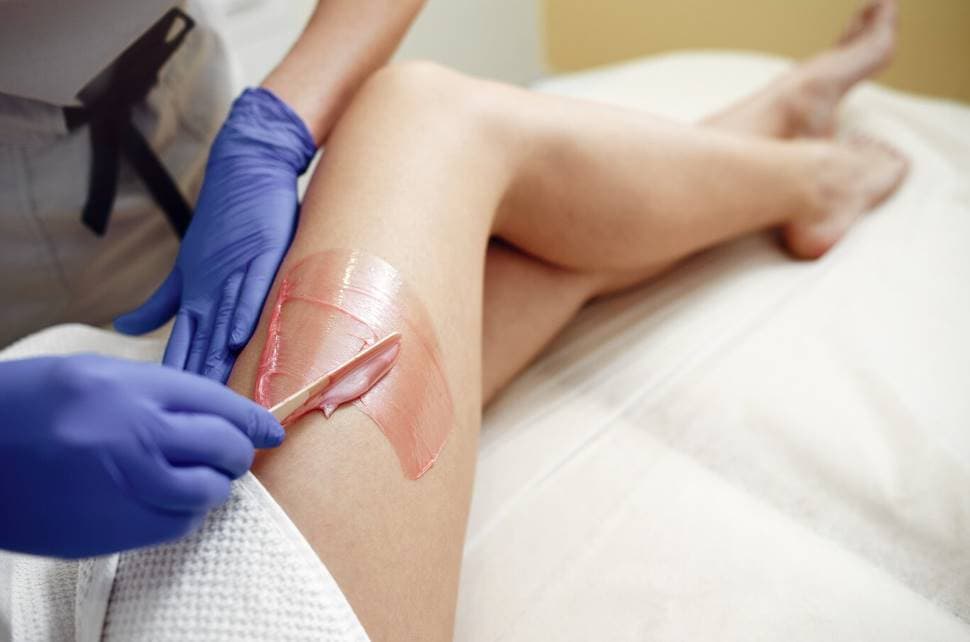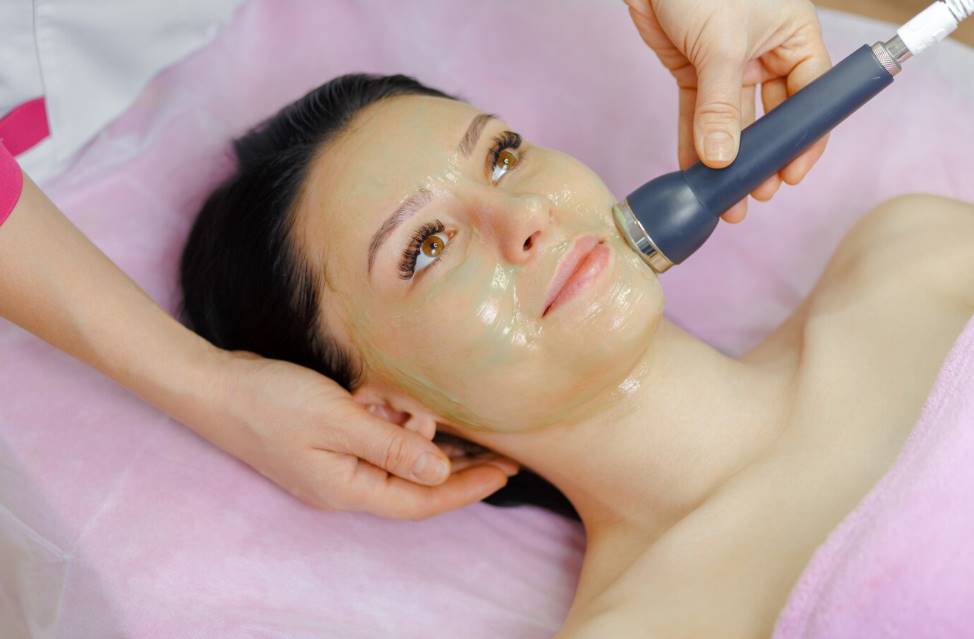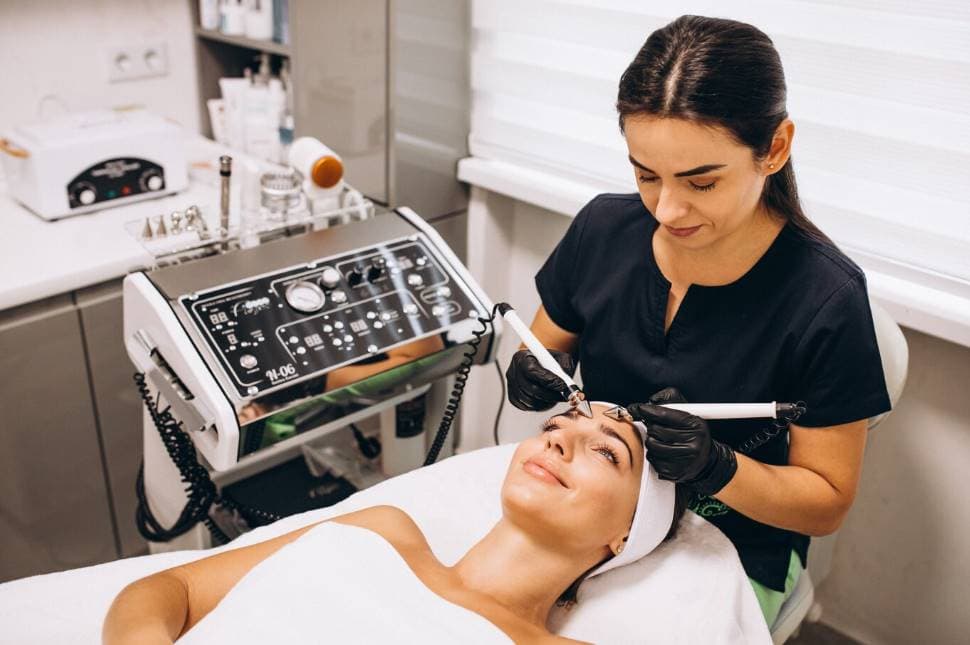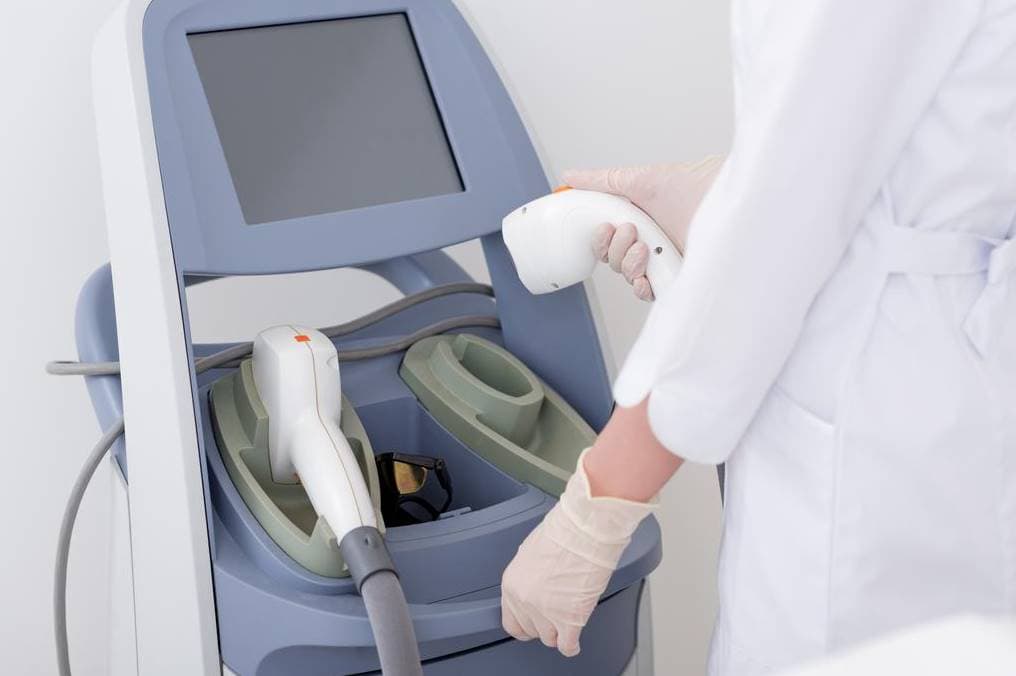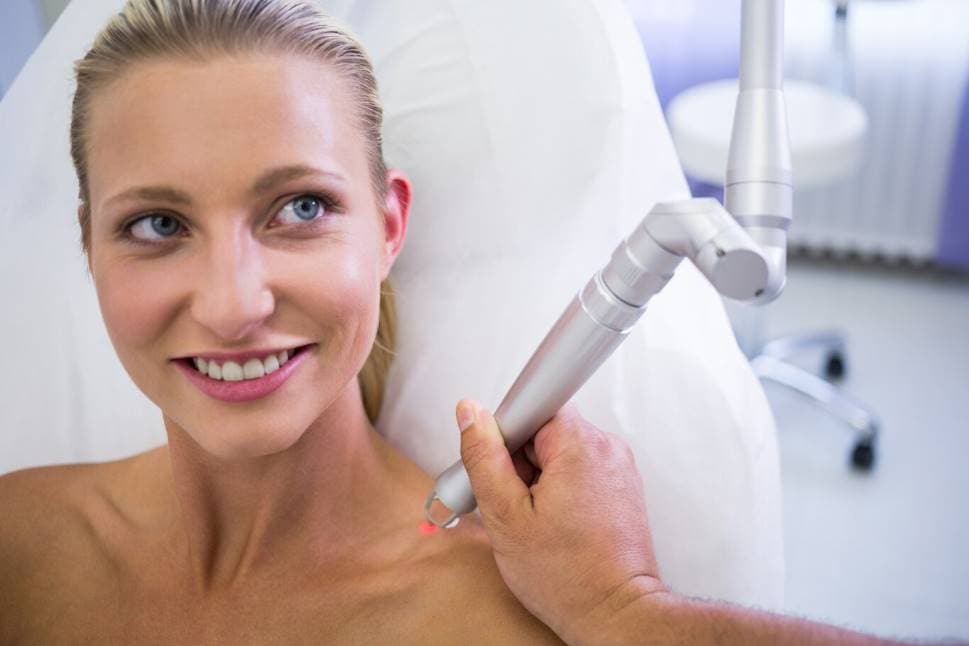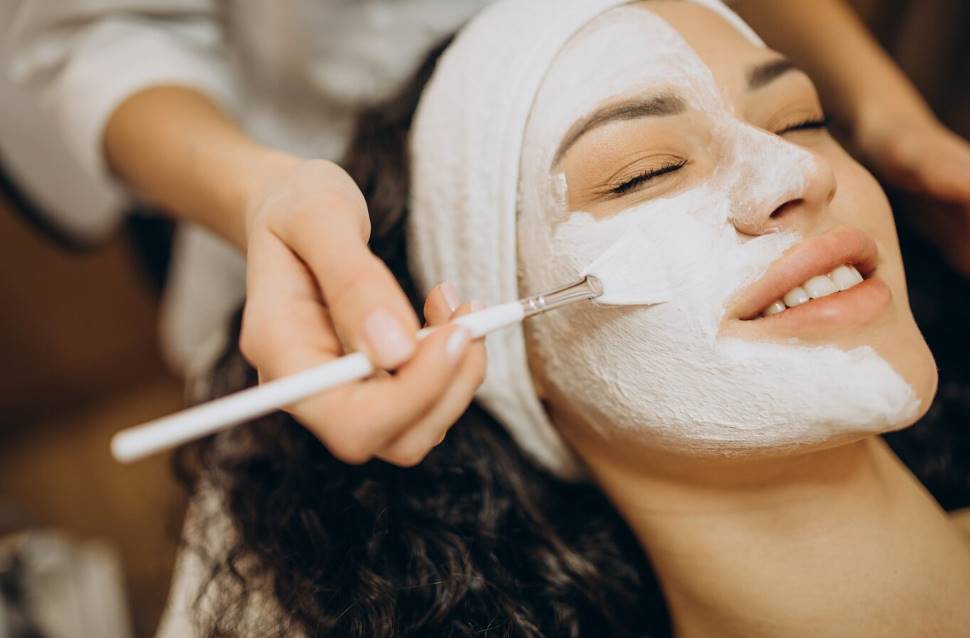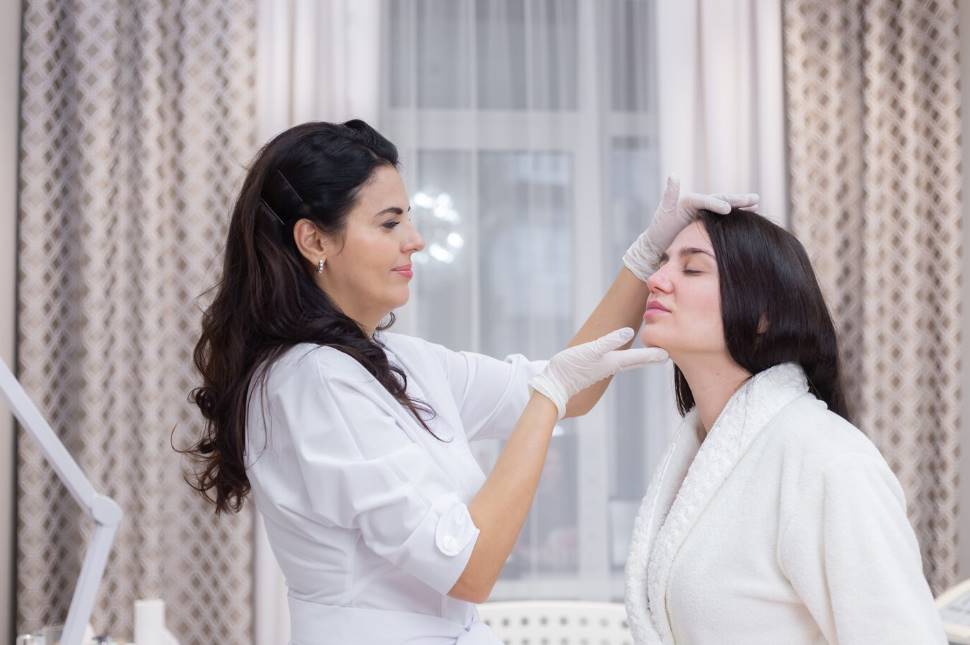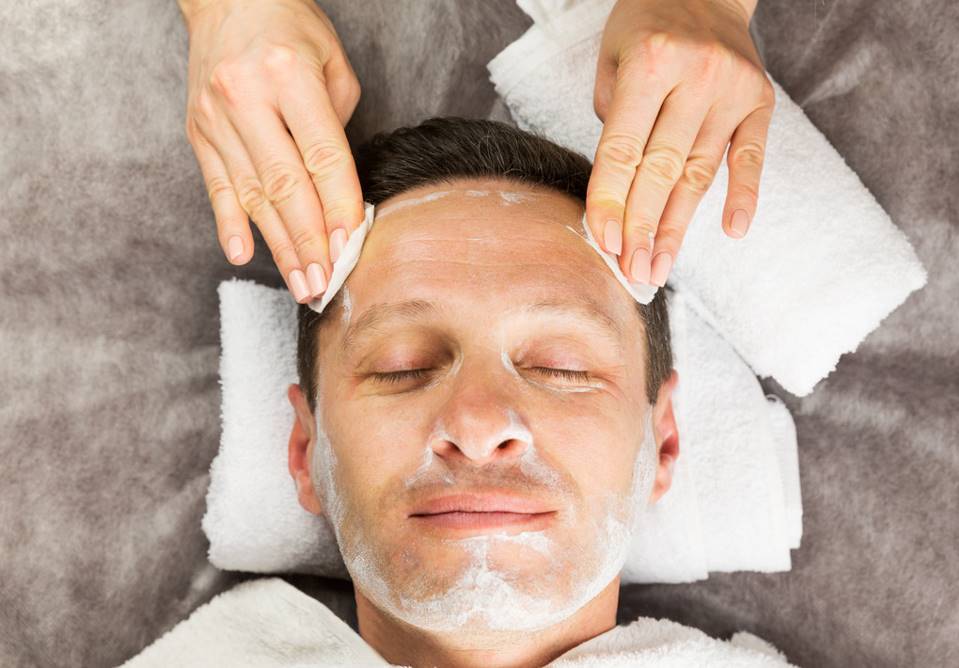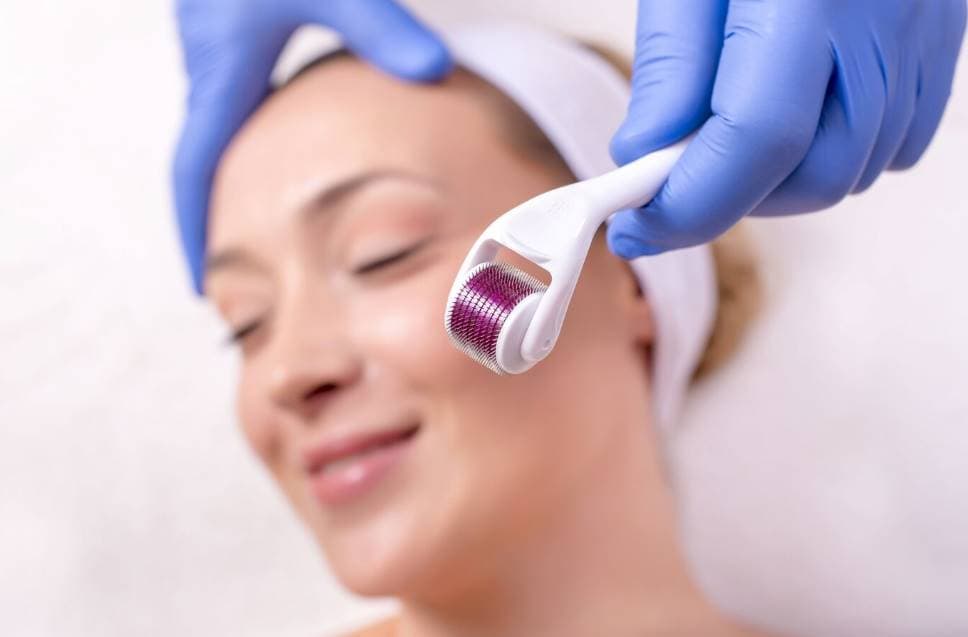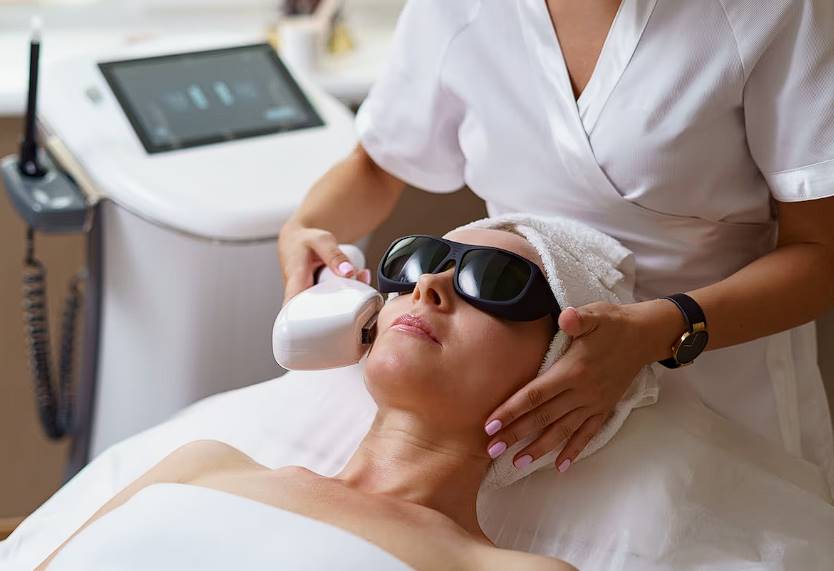Acne scars are always there to remind you of your troubled teen years and beyond. People who want smooth skin have tried creams, serums, and other topically applied treatments, but laser treatment stands out as a technological wonder in dermatology. But how well does it really work?
In this blog, we go deep into the world of laser therapy, looking at how well it works, how it works scientifically, and what people can expect from it. Can laser treatment for acne scars really turn back the clock?
Acne Treatment Using Laser Therapy
Laser therapy for managing acne scars is not a new concept. Yet, it's making waves in treating active acne vulgaris. As technology advances, various laser techniques are being adopted to address specific skin issues.
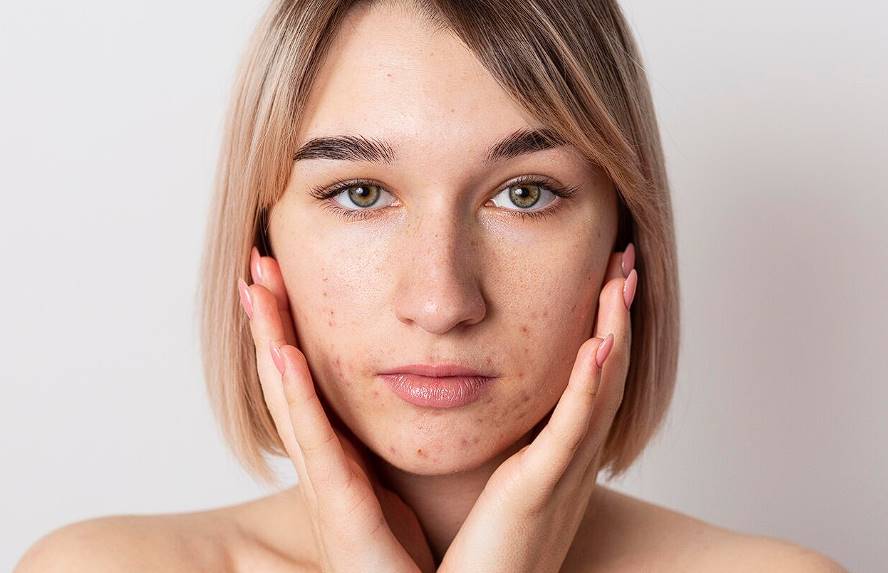
Intense Pulsed Light
- Basics of IPL: IPL devices emit a spectrum of wavelengths between 400 and 1200 nm. By fine-tuning the wavelength, pulse duration, and interval with cut-off filters, treatments can be tailored to different skin conditions.
- Effectiveness: While results vary, combining IPL with a photosensitiser enhances its efficacy.
- How IPL Works: IPL offers a photodynamic effect. The bacteria causing acne, C.Acnes, produce porphyrins that absorb ultraviolet and visible light efficiently. This absorption produces reactive oxygen species, eliminating the bacteria. Moreover, IPL might regulate sebum secretion by targeting blood vessels supplying sebaceous glands.
- Potential Side Effects: Some individuals might experience erythema, crusting, blistering, hyperpigmentation, or even scarring.
- Contraindications: Pregnant individuals, those with recent sun exposure, or those on oral retinoids or photosensitising medications should avoid IPL.
Pulsed Dye Laser
- Aim of PDL: PDL, with a wavelength range of 585-595 nm, targets oxyhaemoglobin in inflammatory acne lesions.
- Mechanism: The PDL's photochemical impact might also make C. acnes porphyrins phototoxic. The laser may also have an anti-inflammatory mechanism.
- Benefits and Use: PDL is becoming a preferred option for those with facial redness, vascular skin issues, or acne scars. Combined with topical photosensitisers, PDL can significantly reduce inflammatory acne lesions.
- Side Effects: Some users report redness, hyperpigmentation, or discomfort during treatment.
Infrared Laser
- Function: Infrared lasers, especially diode lasers (1450 nm) and erbium glass lasers (1540 nm), target water within the sebaceous glands, potentially reducing acne.
- Results: Preliminary studies using the 1540 nm erbium glass laser reported significant acne reduction, with improvements sustained over a 24-month follow-up.
- Side Effects: The diode laser can cause pain, dryness, and erythema, leading some dermatologists to prefer other treatments.
Nd: Yag Laser
- Description: Crafted from neodymium-doped yttrium aluminium garnet crystal, this laser emits a 1064 nm wavelength, reaching deeper dermal layers.
- Effect: It likely combats acne by reducing inflammation and sebum production. However, research primarily focuses on its ability to diminish acne scars.
- Treatment Process: Typically, multiple sessions at 2-week intervals are recommended.
- Side Effects: Some might experience discomfort, redness, and skin dryness.
Potassium Titanyl Phosphate Laser
- Application: More commonly used for telangiectasia and rosacea, the KTP laser produces a green pulsed beam, delving deeper than blue light.
- Mechanism: By stimulating specific C. acnes porphyrins, the KTP laser causes thermal injury to sebaceous glands.
- Effectiveness: Some small-scale studies have reported a temporary reduction in acne lesions.
- Potential Side Effects: Swelling, crusting, and redness are possible after KTP laser treatment.
Laser therapies offer promising results in acne management. However, understanding each method's mechanisms, benefits, and potential risks can help individuals make informed choices. Always consult with a skincare professional before undergoing any laser treatment.
How It Functions
There are two laser acne scar treatments available. To begin, the laser's heat will work to peel away the outermost layer of skin above the scar. As the top layer of your skin peels off, your scar will lighten and your skin will feel smoother.
The laser's light and heat break down the scar tissue and encourage the development of new, healthy skin. In order to heal blood and reduce inflammation, the laser's heat opens blood vessels in the scar. All of these things work together to lessen the visibility and redness of scars, making them appear less severe. Additionally, it helps injured skin recuperate.
Laser Treatment Procedure
Laser therapy has revolutionised the field of dermatology, offering advanced solutions for acne scars. Different types of lasers, including Erbium YAG, carbon dioxide (CO2), and pulsed-dye lasers, are at the forefront of these treatments. Each of these lasers offers a distinct approach tailored to the specifics of the scar at hand.
Ablative Laser Resurfacing
Using a high-intensity carbon dioxide (CO2) or Erbium YAG laser, ablative resurfacing aims to precisely remove the upper layer of skin (epidermis). Although effective, this method can lead to redness that may persist for up to 10 days.
Non-Ablative Laser Resurfacing
This technique employs infrared lasers. It doesn't remove skin layers but heats them enough to stimulate collagen production and new cell growth. The goal is to heal the scarred or injured tissue from within.
Fractionated Laser Treatment
Fractional lasers, commonly known as Fraxel lasers, target the underlying tissue of the scar. They work by aiming to eliminate darkly pigmented cells that are present beneath the skin's surface. They are particularly effective against certain scar types, such as boxcar and ice-pick scars.
Potential Risks and Side Effects
Like all medical treatments, laser therapy for acne scars has its set of potential risks and side effects. The intensity and duration of these reactions can vary based on the chosen laser type, individual skin types, and the number of required sessions.
Common side effects post-treatment include:
- Swelling of the treated area
- Redness that can persist for several days
- Mild discomfort at the treatment site
Although the discomfort usually subsides within a few hours, the redness can linger for up to 10 days. Some rare side effects include hyperpigmentation and infections. While these are generally uncommon and often preventable, it's crucial to discuss any concerns with your dermatologist before embarking on the treatment journey.
Should anyone experience symptoms such as significant swelling, pus formation, or fever post-treatment, it's imperative to contact the healthcare provider promptly.
Laser treatments provide hope for those struggling with acne scars. However, understanding the process and potential risks is essential. Always opt for a qualified dermatologist to ensure safety and efficacy.
How Many Laser Appointments Are Needed To Get Rid Of Acne Scars?
Whether or not the outcomes of laser treatment for acne scars are permanent is a prevalent one. If you spend a lot of money on this therapy, you probably want the results to endure as long as possible.
Patients typically observe benefits after the first treatment, while the number of treatments needed varies widely based on the severity of the scarring. Appointments at the laser clinic may need to be spread out over a few months if the desired results are to be achieved.
Avoid making comparisons to other patients who may have seen immediate, dramatic benefits because everyone's skin is different. Patients need to be patient to get the most out of laser treatments. This method, however, is quite successful in minimising acne scars.
- Acne scarring and the skin's ability to mend will determine the long-lasting consequences of ablative laser treatment. Even though this laser treatment seldom requires follow-up sessions, the scarring might return.
- When acne scarring is mild, non-ablative treatments like laser resurfacing can produce long-lasting improvements. It may take some time for the full effect of the therapy to be apparent due to the formation of collagen; nevertheless, once recognised, the results typically last for a very long time.
- Some forms of pigment alterations brought on by acne can be helped by laser therapy. The results should be long-lasting, albeit only guaranteed for a while. Sometimes, discolouration fades away after a while.
Laser resurfacing and ablation treatments can temporarily worsen the appearance of the skin in certain patients. As the skin begins to mend, it may become red and puffy on the surface. However, the impact should be lasting once the therapy is finished and the skin has recovered.
It's crucial to seek individualised guidance from a seasoned dermatologist if you're considering laser therapy for acne scars.
The ability of the skin to heal, the nature of the scar, and other factors all contribute to whether or not treatment is successful. The treatment's efficacy and duration are conditional on the severity of your acne scarring. Your doctor's skin inspection results will give you a better understanding of what to anticipate.
What To Expect
What to expect from a laser or other light treatment administered in a doctor's office for acne is detailed below.
Though It's Not 100%, Most People See Clearing.
According to studies, acne can be reduced with lasers and other light treatments. These therapies almost seldom work alone to eliminate acne. Your dermatologist may also suggest an additional acne therapy, such as a topical medication, for optimal results.
A Person's Experience Varies.
There is currently no method to predict which patients will have improvement after laser or light treatment or how much improvement they will experience.
Most People Require Multiple Treatments To See Improvements.
Several studies revealed that multiple therapies are vastly superior to a single one.
Observing Results Requires Time.
Studies have shown that patients have the greatest improvement in the weeks following the completion of treatment. One study found that after 4 weeks of treatment, patients who underwent photodynamic therapy had 50% fewer spots. A 72% decrease was seen 12 weeks following the final treatment.
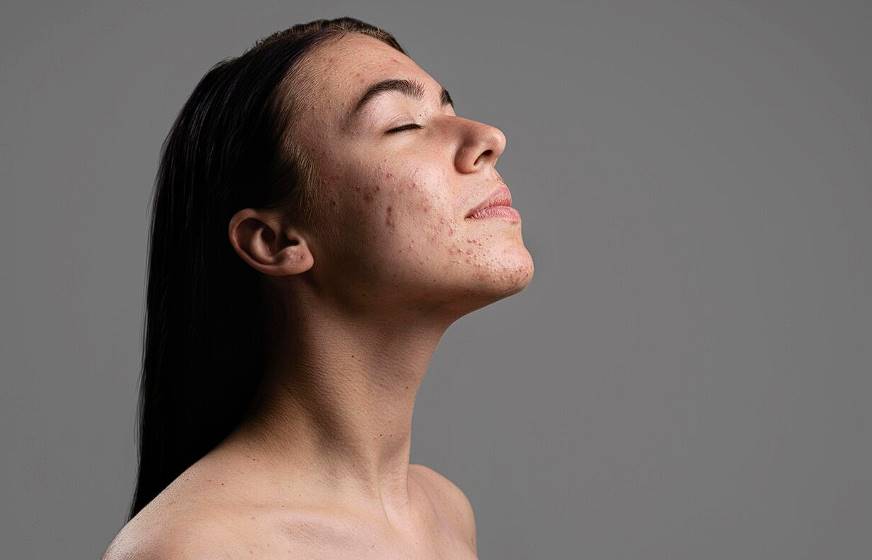
Additional Treatments Might Be Required.
Once achieved, the benefits of laser and light therapy tend to last for quite some time. However, patients typically require annual maintenance treatments to keep the effects going.
Lasers And Other Light Therapies May Have Adverse Effects.
Many laser and light therapies result in post-treatment redness and swelling. Some patients have reported itching and burning. These are often short-lived, lasting only a few hours at most. Although uncommon, other adverse effects have been reported.
Long-lasting discomfort, burns, and blisters are all examples. Skin discolouration and scarring are also potential outcomes. These complications can be avoided by seeking care from a dermatologist board qualified to utilise lasers.
Patients Have To Follow Their Dermatologist's Advice Strictly.
Dermatologists provide pre- and post-treatment recommendations to help patients get the most out of their treatments and minimise potential adverse effects. You must follow the guidelines exactly. For instance, patients undergoing photodynamic therapy must stay out of direct sunshine for 48 hours afterwards.
Conclusion
Laser treatment is a common way to get rid of acne scars, and it can also help with other skin problems. It uses different laser methods, such as Intense Pulsed Light (IPL), Pulsed Dye Laser (PDL), Infrared Laser, Nd: Yag Laser, and Potassium Titanyl Phosphate Laser. IPL uses a range of wavelengths between 400 and 1200 nm to target inflammatory acne lesions, while PDL targets oxyhaemoglobin in inflammatory acne lesions.
Infrared lasers, especially diode and erbium glass lasers, can target the water in sebum glands, which could help get rid of acne. But diode lasers can cause pain, dryness, and redness, so some doctors prefer to use other methods. Nd: Yag Laser is made of neodymium-doped yttrium aluminium garnet crystal and has a wavelength of 1064 nm, which can reach lower layers of skin.
Potassium Titanyl Phosphate Laser is usually used to treat telangiectasia and rosacea. It makes a pulsed green beam that goes deeper than blue light. It makes certain C. acnes porphyrins work harder, which damages oil glands through heat.
Laser treatments for acne show promise, but people can make better decisions if they know how each method works, what benefits it offers, and what risks it might have. Always talk to a professional in skin care before getting a laser treatment.
There are two types of laser treatments for acne scars: ablative laser removal and fractionated laser treatment. Ablative resurfacing removes the top layer of skin, while non-ablative resurfacing encourages collagen production and new cell growth. Fraxel lasers aim at the scar's deeper tissue and kill the darker-coloured cells there.
Laser therapy for acne scars could have risks and side effects that depend on the type of laser used, the person's skin, and the number of sessions needed. Some common side effects are swelling, redness that doesn't go away, and mild pain at the treatment spot. Some rare side effects are hyperpigmentation and infections, both of which happen rarely and can often be avoided.
Depending on how bad the scars are, the number of laser visits needed to get rid of them can vary. Patients usually start to feel better after the first treatment, and the number of treatments needed depends on how bad the scarring is. Laser resurfacing is a non-ablative treatment that can give long-lasting results, and laser therapy can help with colour changes caused by acne.
The long-term effects of laser treatment depend on the scars from acne and how well the skin can heal. Patients should be patient and talk to an experienced doctor about their specific needs.
Most people see their skin clear up after laser or light treatments, but there is no way to know which patients will get better or how much better they will get. Most people need more than one treatment to feel better, and most people need maintenance treatments once a year to keep the results going.
Laser and light treatments can cause side effects like redness, swelling, itching, burning, long-term pain, burns, blisters, discolouration of the skin, and scarring. Patients should always do what their doctor tells them to do to reduce the risk of side effects.
Content Summary
- Acne scars are reminders of one's past skin challenges.
- Many have experimented with creams and serums for acne scars.
- Laser treatments offer a cutting-edge solution in dermatology.
- Laser therapies target active acne vulgaris effectively.
- IPL devices adjust to different wavelengths for tailored treatment.
- Combining IPL with photosensitisers enhances its results.
- IPL's photodynamic effect targets and kills acne-causing bacteria.
- Pulsed Dye Lasers (PDL) specifically target inflammatory acne lesions.
- PDL can also exhibit anti-inflammatory effects on the skin.
- Infrared lasers target water in sebaceous glands to combat acne.
- Diode lasers can potentially regulate sebum production.
- The Nd: YAG laser delves deep into the dermis layers.
- KTP lasers target sebaceous glands to thermally injure them.
- Laser therapy is transforming how dermatologists address acne scars.
- Ablative laser resurfacing precisely removes the skin's outer layer.
- Non-ablative lasers promote collagen formation without skin removal.
- Fraxel lasers aim at the deeper tissue of the scar.
- Each laser therapy presents its set of potential side effects.
- Patients typically see benefits post the first laser treatment.
- Laser therapy results are influenced by individual scar characteristics.
- Non-ablative laser treatments often yield long-lasting benefits.
- Discolouration may sometimes fade post-laser treatment.
- Seeking advice from seasoned dermatologists is crucial.
- While lasers provide clearing, it's seldom 100%.
- Multiple laser treatments often yield the best results.
- Patients' experiences with laser treatments vary widely.
- Treatment efficacy is often visible weeks after completion.
- Laser and light therapies might require annual maintenance.
- Patients may experience short-lived redness post-treatment.
- It's essential to seek board-certified dermatologists for safe procedures.
- Pre and post-treatment advice ensures treatment optimisation.
- Some patients might experience itching or burning post-treatment.
- Patients undergoing certain therapies should avoid direct sunlight.
- In certain cases, laser treatments can cause temporary skin discolouration.
- Most people witness significant improvements with multiple sessions.
- Photodynamic therapy patients have witnessed a 50% reduction in spots.
- Laser treatments require patience for optimal results.
- PDL is a preferred option for facial redness and acne scars.
- The diode laser's side effects have led to its limited use by dermatologists.
- The potential of laser treatments for acne management is promising.
- Topical treatments often complement laser therapies for maximum results.
- Patients should promptly report any unusual post-treatment symptoms.
- Laser therapy's results depend on acne scarring severity.
- Dermatologists can provide insights on what to expect post-laser treatment.
- IPL treatments can cause side effects like erythema and blistering.
- Infrared lasers reach deep into the dermis to combat acne.
- Each laser type has a distinct approach tailored to the scar type.
- Intense pulsed light (IPL) offers promise in acne scar treatments.
- Combining different treatments can enhance laser therapy's efficacy.
- PDL treatments can significantly reduce acne-induced facial erythema.
Frequently Asked Questions
Laser treatment can also make a scar less noticeable, but it cannot get rid of a scar. When you have laser scar treatment, you replace one scar with another less noticeable scar. Your results depend largely on the skills of the person performing the laser treatment.
The most popular treatments for acne scars, such as laser resurfacing or microneedling, may require anywhere from four weeks up to six months to give you noticeable results. Your acne scar treatment must first break down old scar tissue and stimulate collagen production to support new, healthy skin.
Powerful laser treatments can fade mild acne scars in as little as a single appointment. In contrast, other energy-based treatments, such as IPL, may require several sessions to improve your appearance visibly. Laser and light treatments may require three to six treatments to reduce acne scars significantly.
For serious scarring from previous bouts with acne, several types of treatment can help Laser resurfacing. This procedure can be done in the doctor's or dermatologist's office. The laser removes the damaged top layer of skin and tightens the middle layer, leaving the skin smoother.
Dermatologists use fillers to safely and effectively plump depressed acne scars. A dermatologist may fill acne scars with collagen, the patient's fat, or another substance. Many fillers give us temporary results lasting between 6 and 18 months. Some fillers are permanent.
